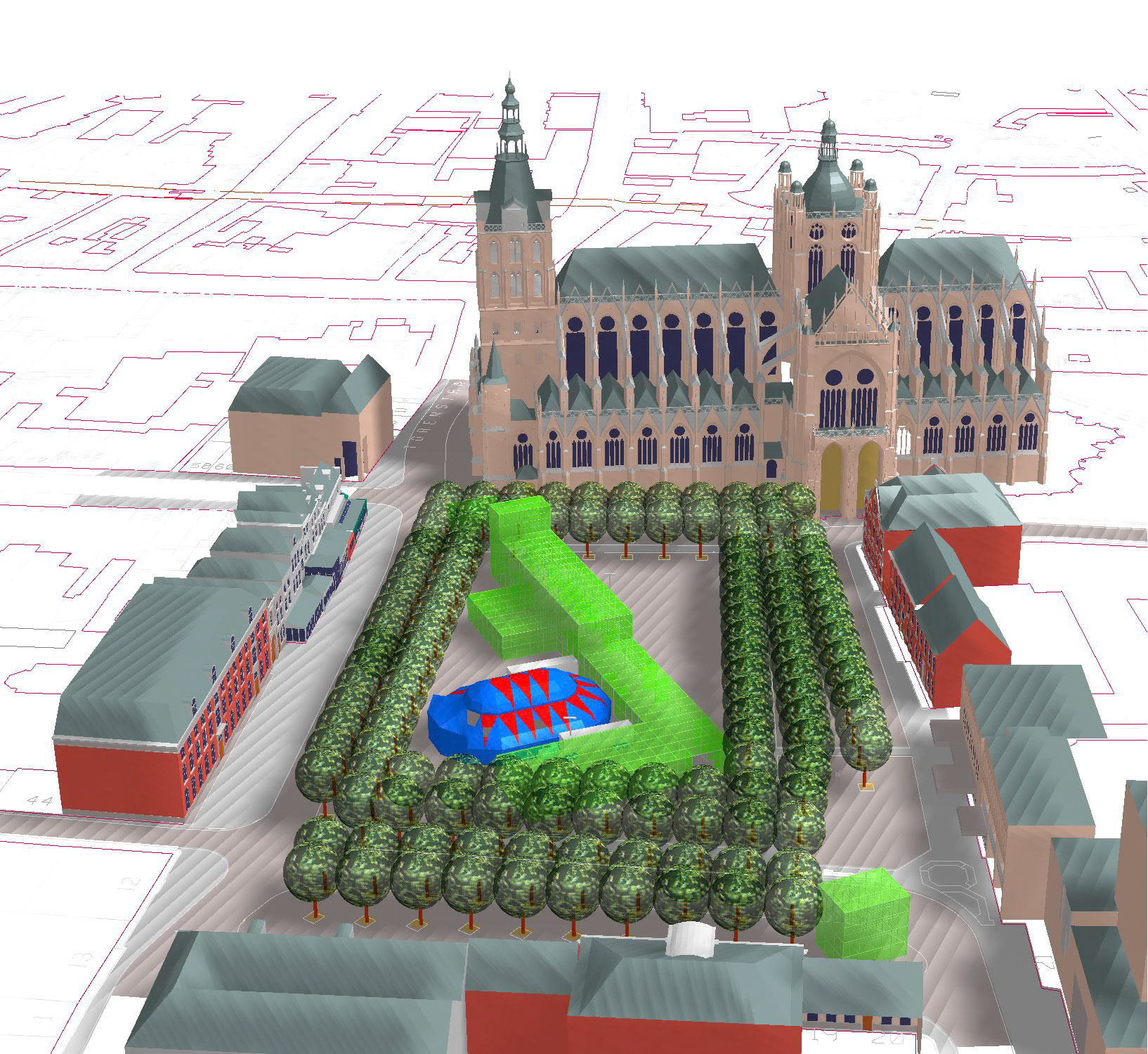
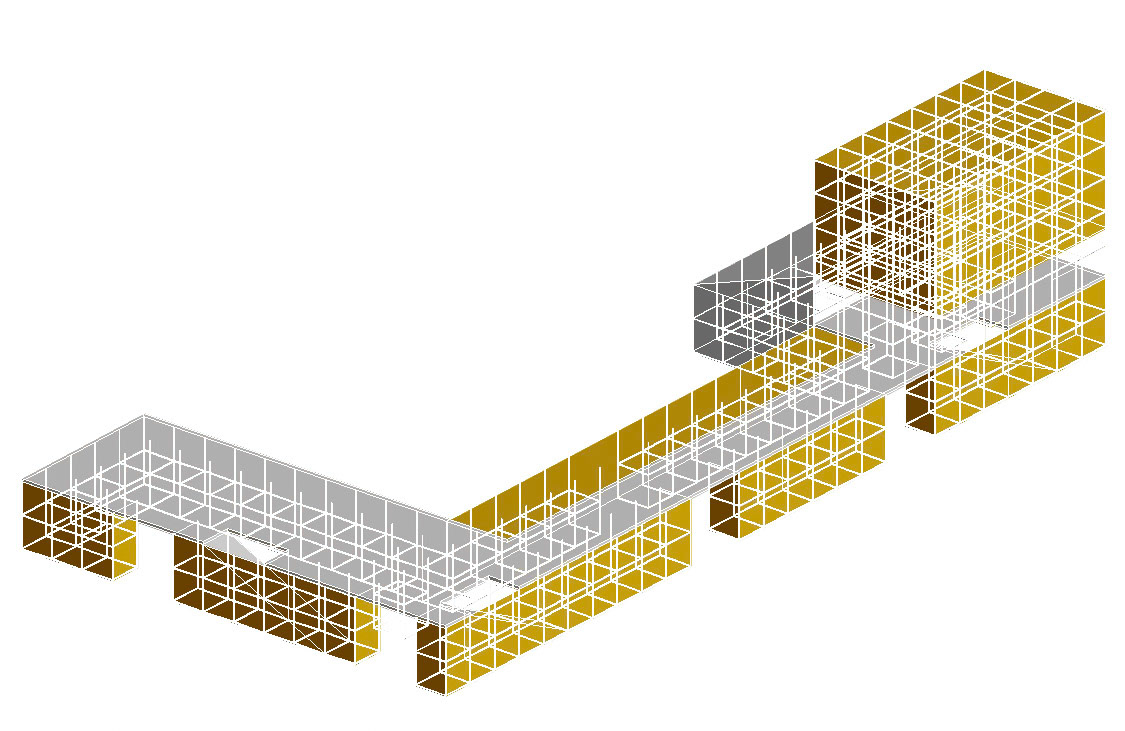
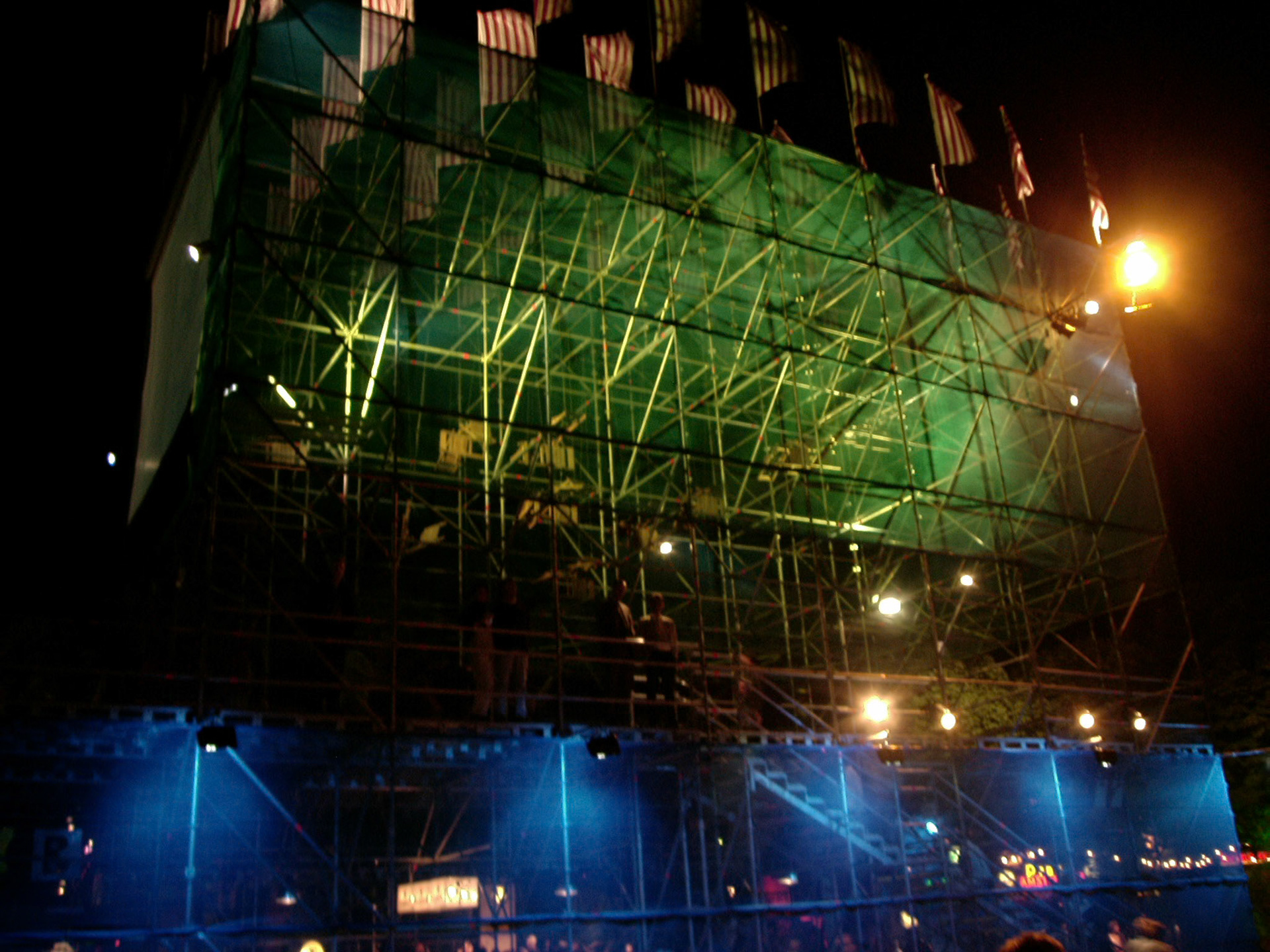
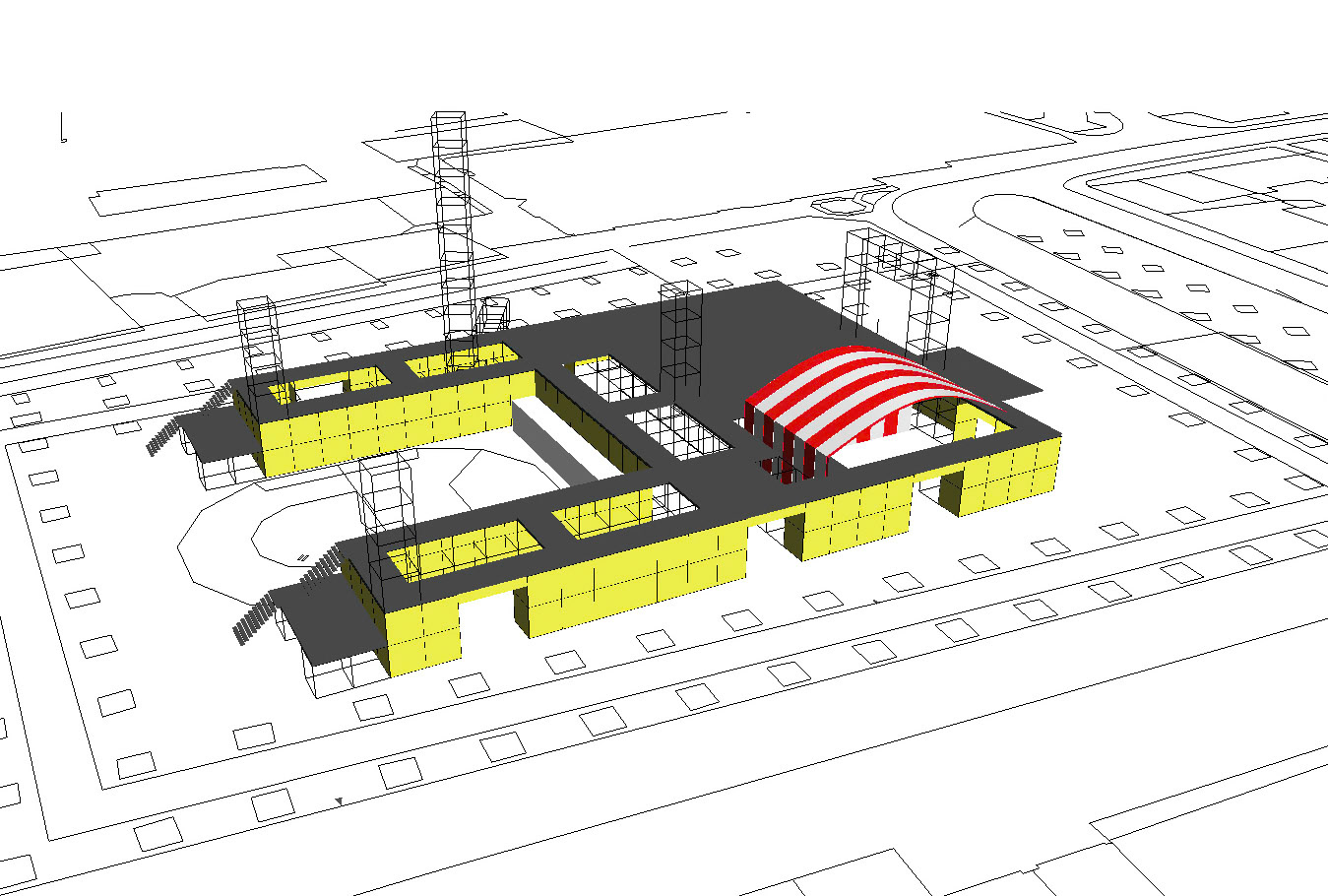
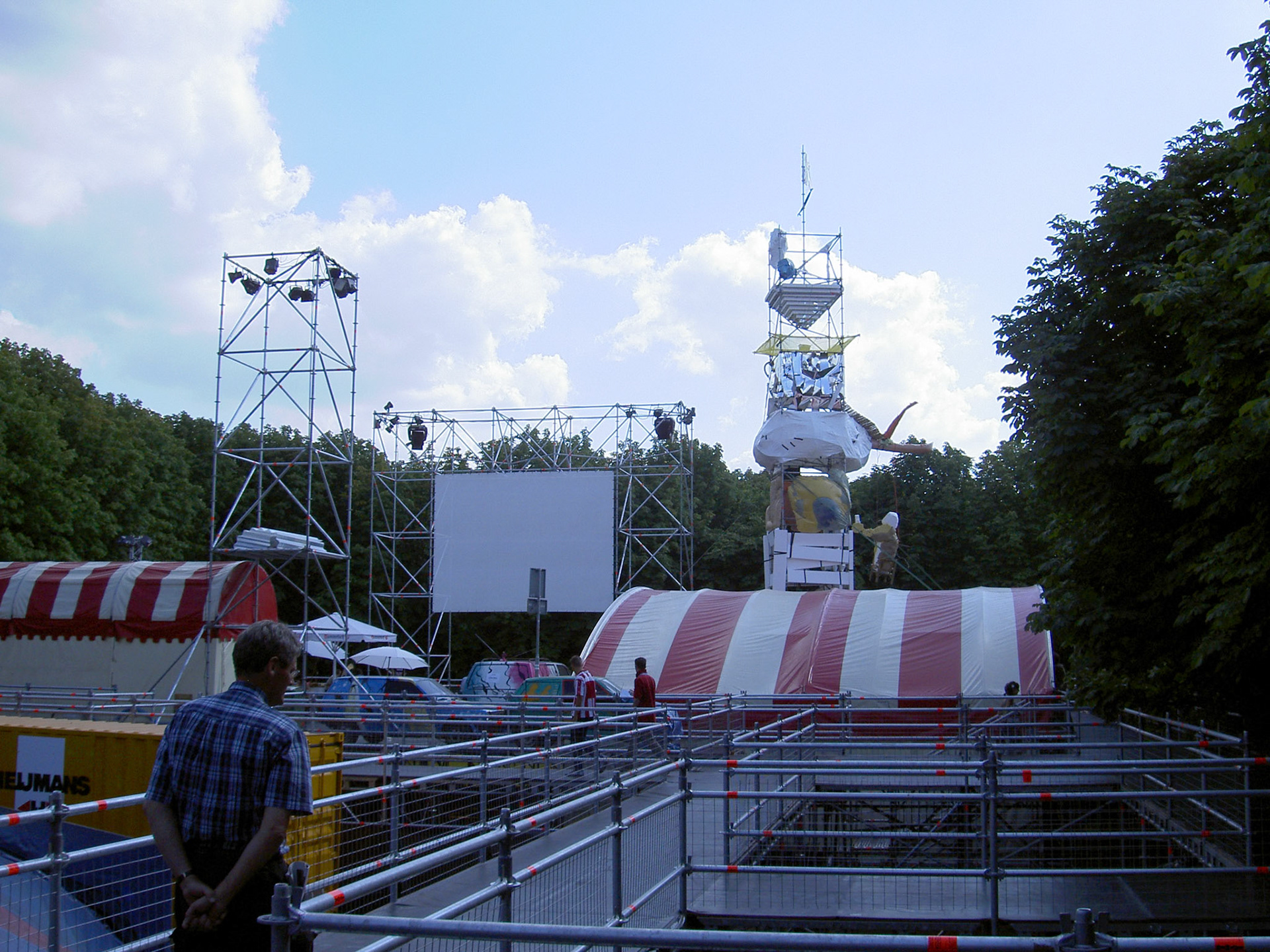


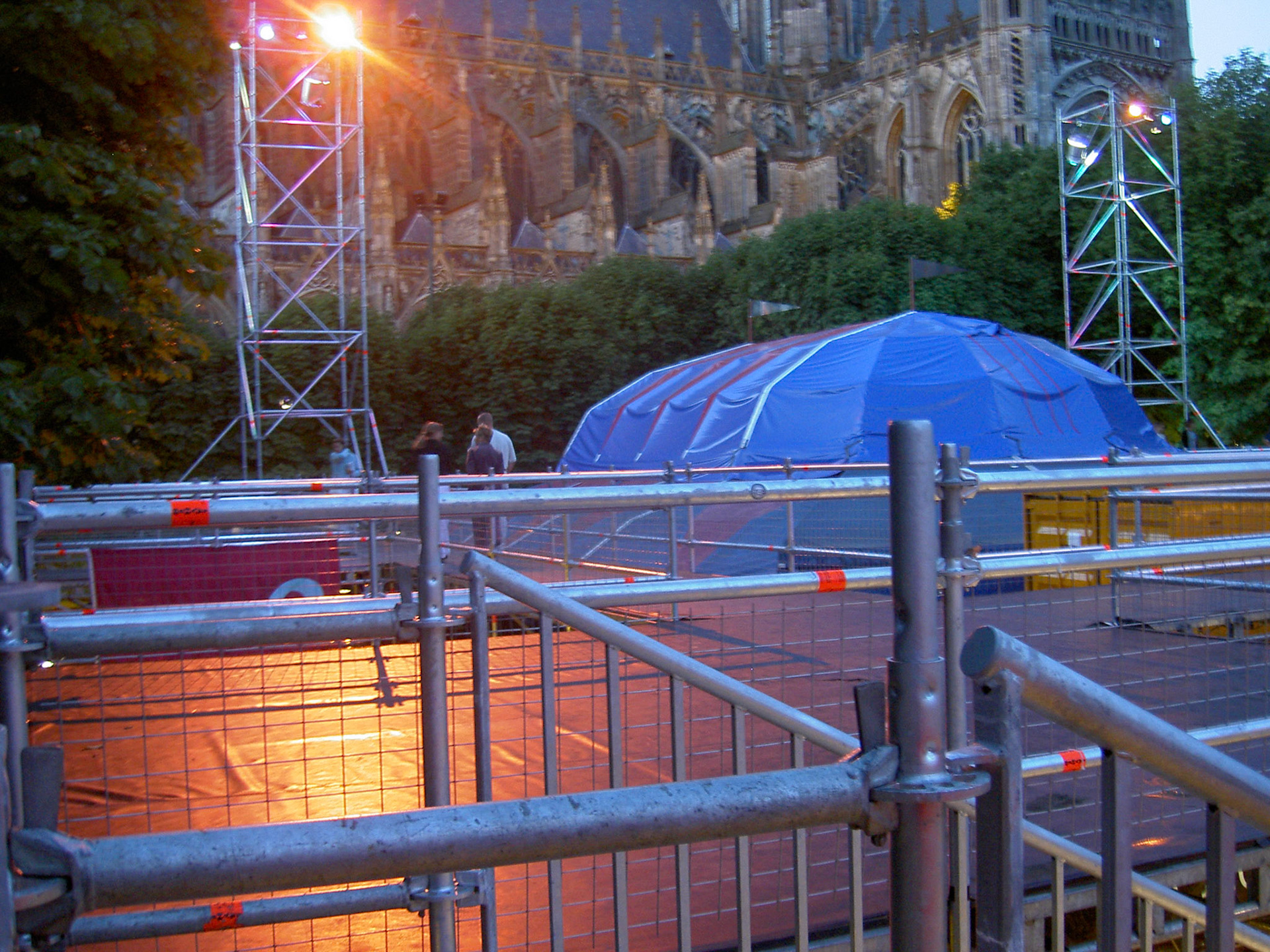
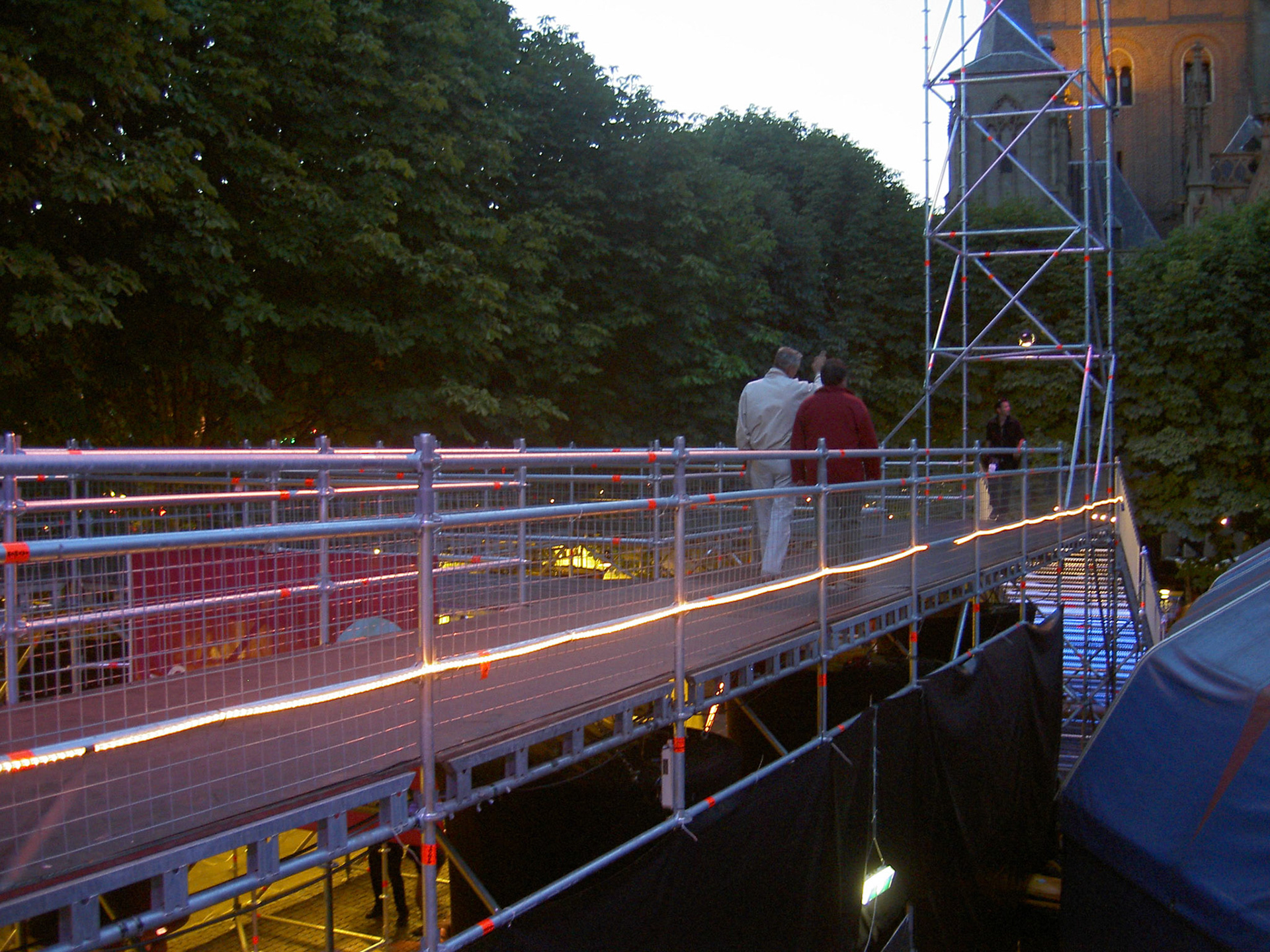
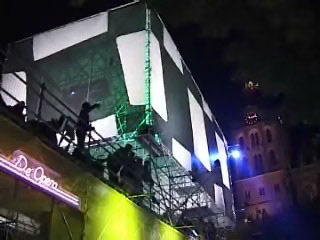
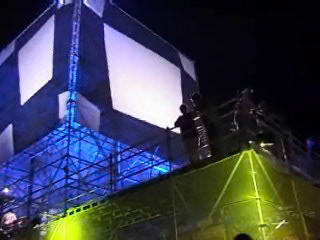


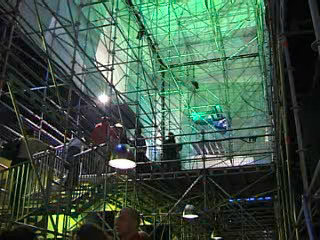
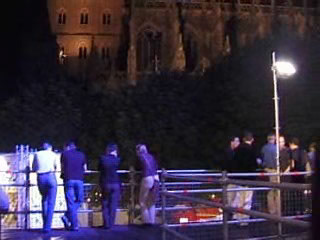
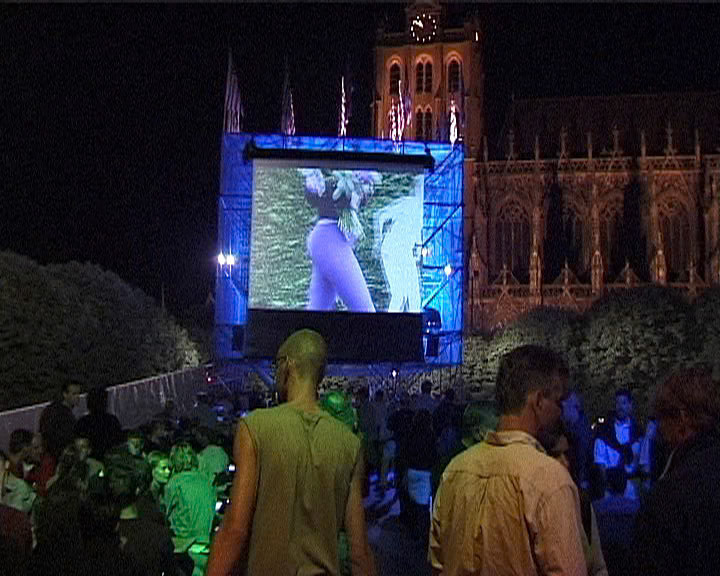
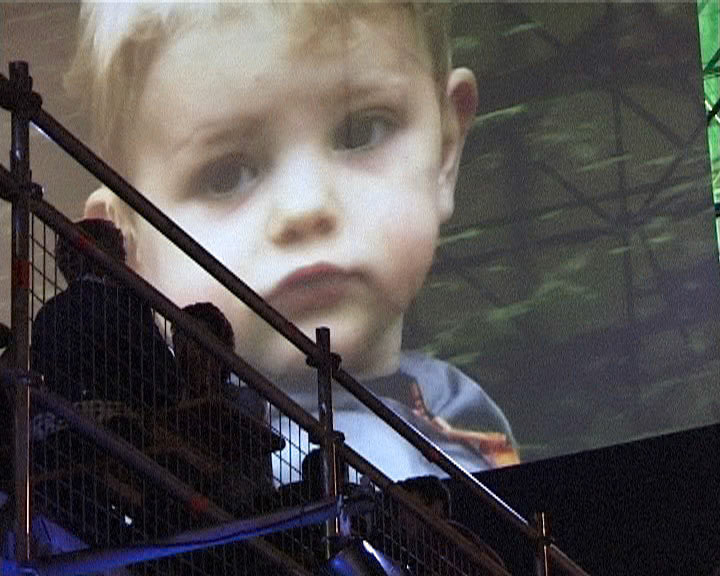
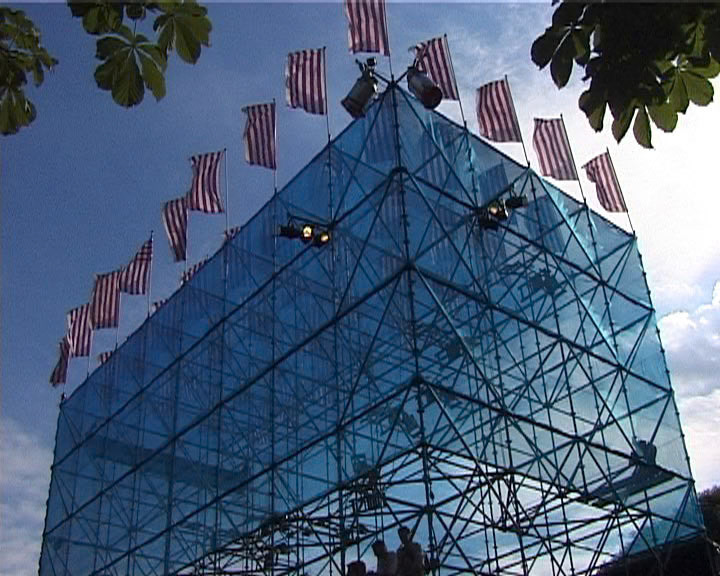
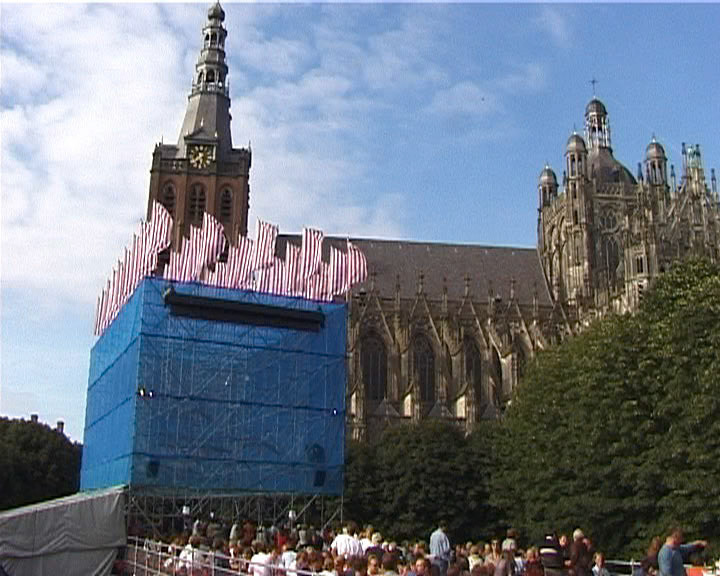
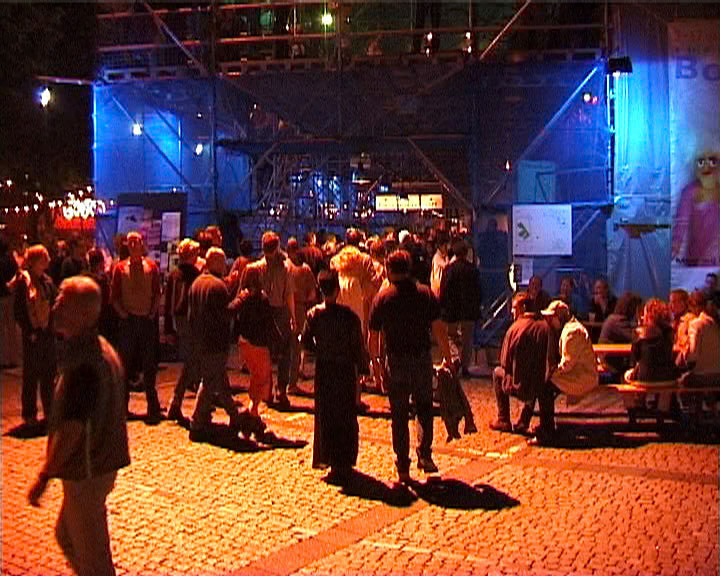
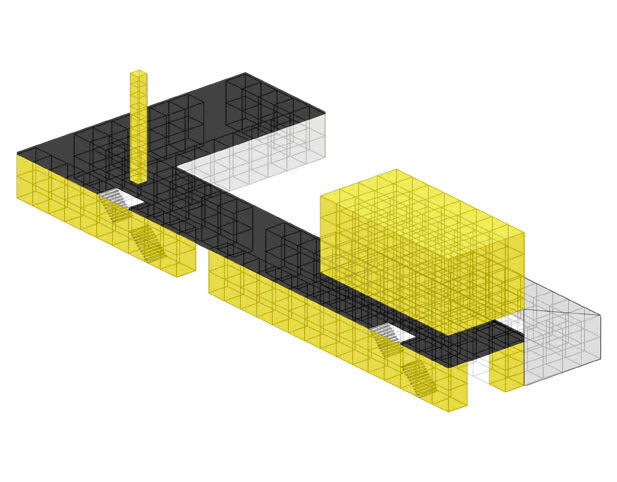
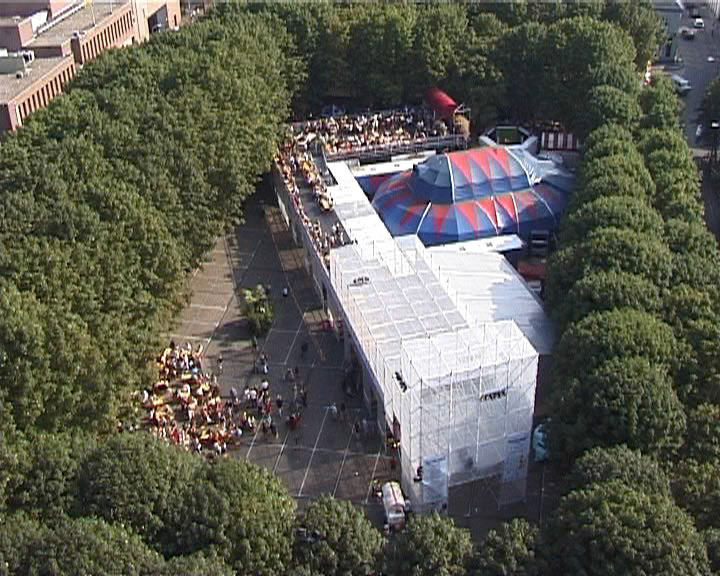
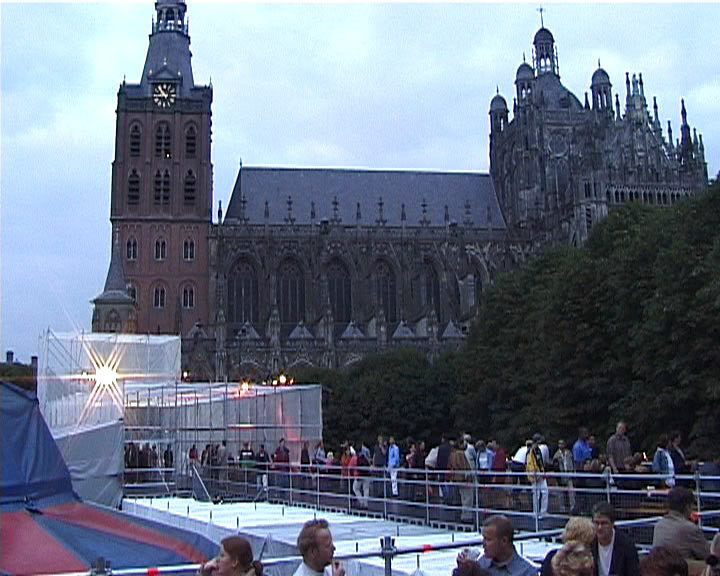
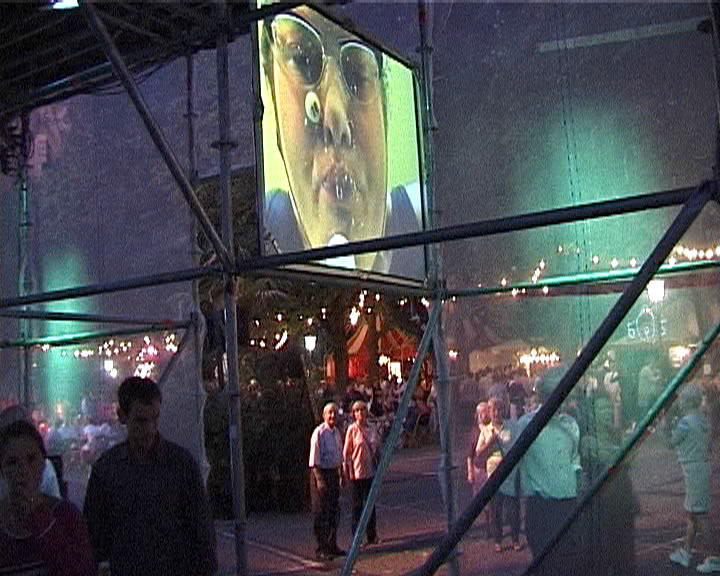
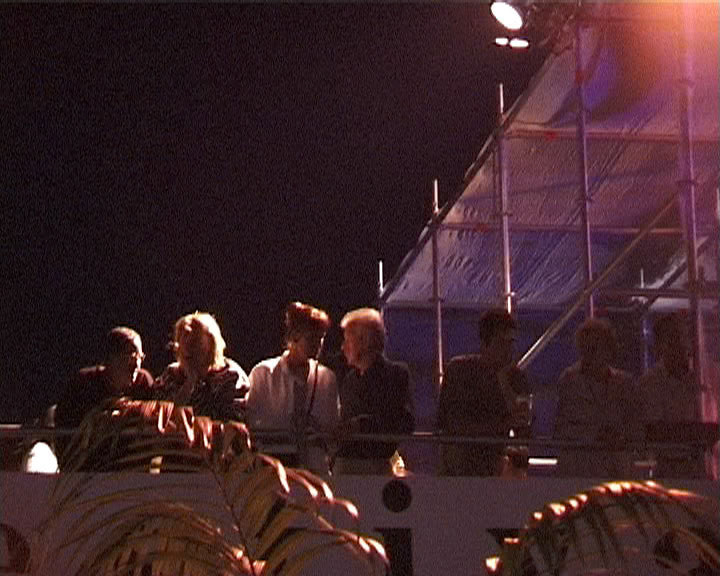
2003/2002/2001/2000 Corridor, Commissioned by Boulevard Theater Festival, ’s-Hertogenbosch (nl)
Wouldn’t it be interesting for a theater festival to unsuspectingly put their audience on stage? When the members of the Boulevard Theater Festival in ’s-Hertogenbosch first commissioned Jeroen Doorenweerd in 2000 to design an alternative for the festival’s presence on the city’s central square, they could have hardly imagined that his plan would not only provide an architectural solution for the logistical problems of the festival, but also blur the distinction between where the audience begins and the stage ends.
Doorenweerd was commissioned four times for the festival (2000-2003), yet each year his solution was only a slight adaptation of the same design: a multistory object entitled Corridor, built out of more than forty tons of scaffolding and placed diagonally on the central square at the foot of the St Jan Cathedral. This object not only provided a logistical alternative for the festival’s many visitors, but also more space for programming: music, exhibitions, café, information, bistros, and so forth. The structure also acted as a backdrop for films during the evenings and artistic applications by artists such as JCJ Vanderheyden and Daniel Buren. Most importantly, however, was the vertical dimension it offered to experiencing the festival itself. As a multistory construction, Corridor created a hierarchy of public space without compromising its ‘publicness’: in 2000 the third storey provided an extravagant view of the city centre and the gothic cathedral, while the second storey was the ideal spot to sit when it rained. Corridor therefore became very much a public island in the middle of public space. Instead of circumnavigating the festival on street level, visitors were now drawn to climbing the structure where they could enjoy a drink and/or watch other visitors from above. Ultimately, in 2003 Corridor went beyond its initial relationship with the city as it no longer diagonally rebelled against the square, but completely replaced it, taking up its surface entirely. The festival becoming more successful obliged Doorenweerd not only to think bigger in terms of size, but also in terms of system. This last edition was an intrinsic balancing act not only be-tween stage and audience, but also logistically providing for the many operations ‘backstage’, which were the backbone of the festival. After 2004 the festival departed from its singular figure and fused with various locations in the city, leaving behind the empty stage of the city square. (Huib Haye van der Werf)
Doorenweerd was commissioned four times for the festival (2000-2003), yet each year his solution was only a slight adaptation of the same design: a multistory object entitled Corridor, built out of more than forty tons of scaffolding and placed diagonally on the central square at the foot of the St Jan Cathedral. This object not only provided a logistical alternative for the festival’s many visitors, but also more space for programming: music, exhibitions, café, information, bistros, and so forth. The structure also acted as a backdrop for films during the evenings and artistic applications by artists such as JCJ Vanderheyden and Daniel Buren. Most importantly, however, was the vertical dimension it offered to experiencing the festival itself. As a multistory construction, Corridor created a hierarchy of public space without compromising its ‘publicness’: in 2000 the third storey provided an extravagant view of the city centre and the gothic cathedral, while the second storey was the ideal spot to sit when it rained. Corridor therefore became very much a public island in the middle of public space. Instead of circumnavigating the festival on street level, visitors were now drawn to climbing the structure where they could enjoy a drink and/or watch other visitors from above. Ultimately, in 2003 Corridor went beyond its initial relationship with the city as it no longer diagonally rebelled against the square, but completely replaced it, taking up its surface entirely. The festival becoming more successful obliged Doorenweerd not only to think bigger in terms of size, but also in terms of system. This last edition was an intrinsic balancing act not only be-tween stage and audience, but also logistically providing for the many operations ‘backstage’, which were the backbone of the festival. After 2004 the festival departed from its singular figure and fused with various locations in the city, leaving behind the empty stage of the city square. (Huib Haye van der Werf)